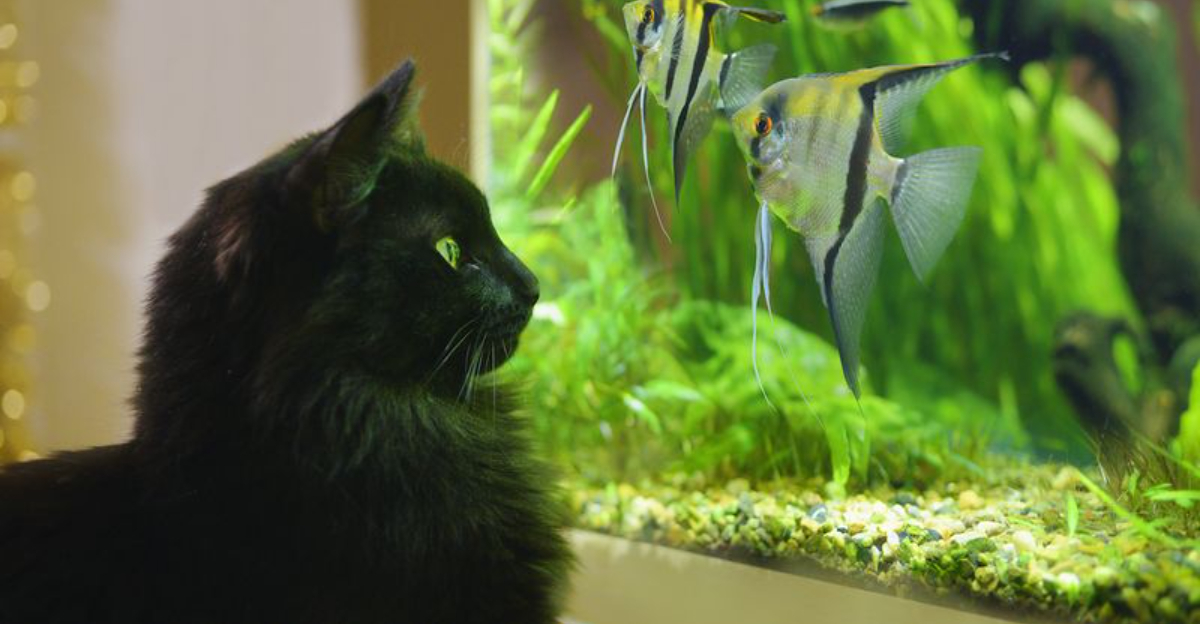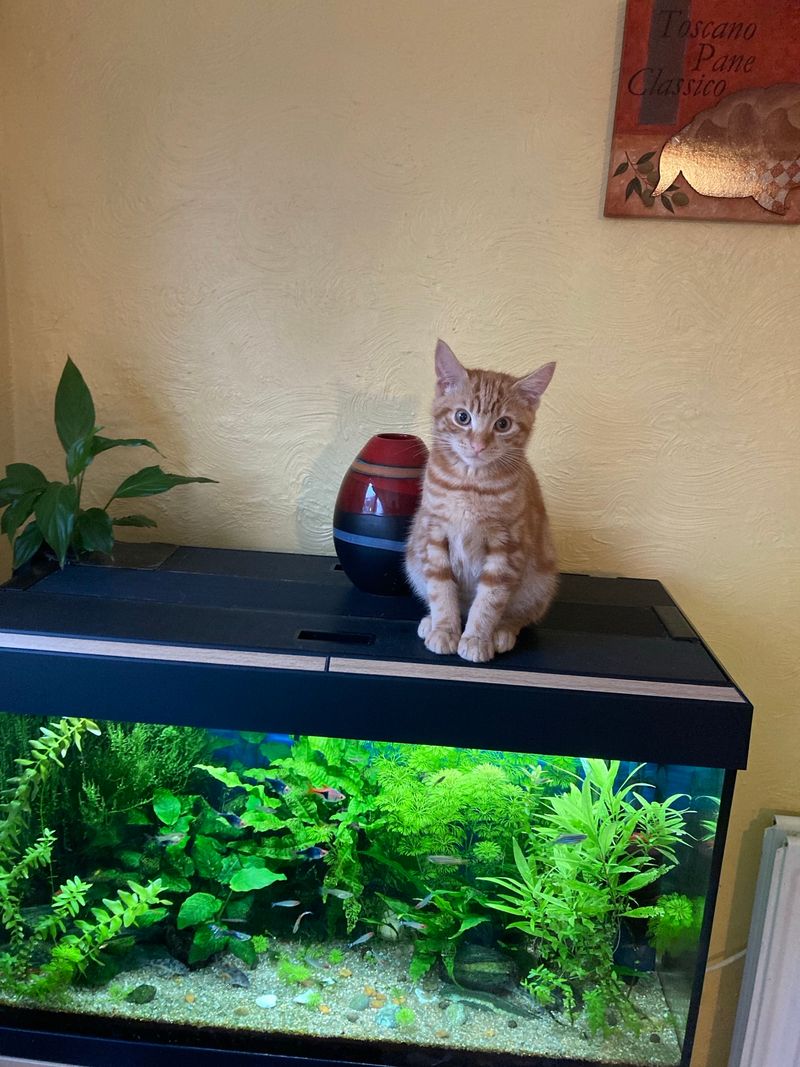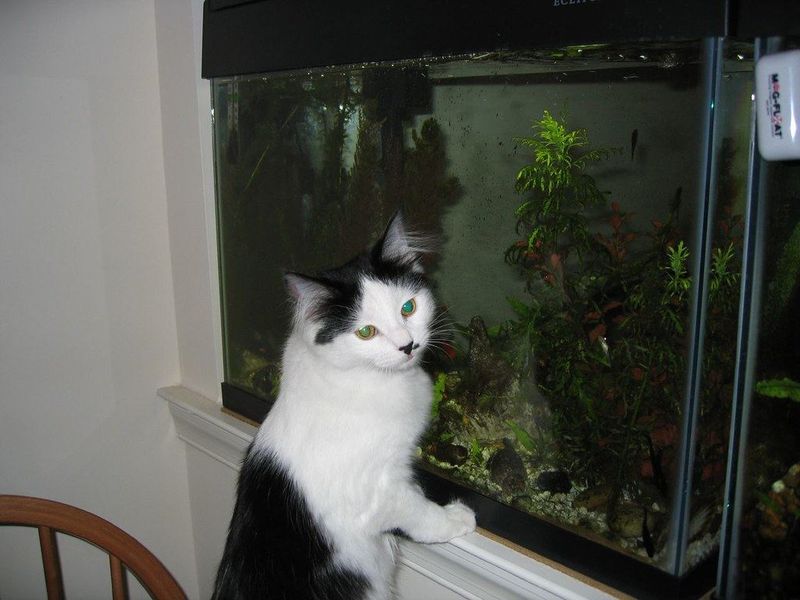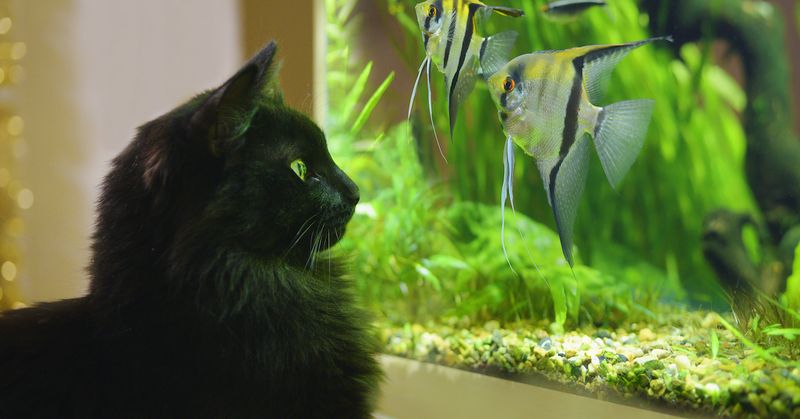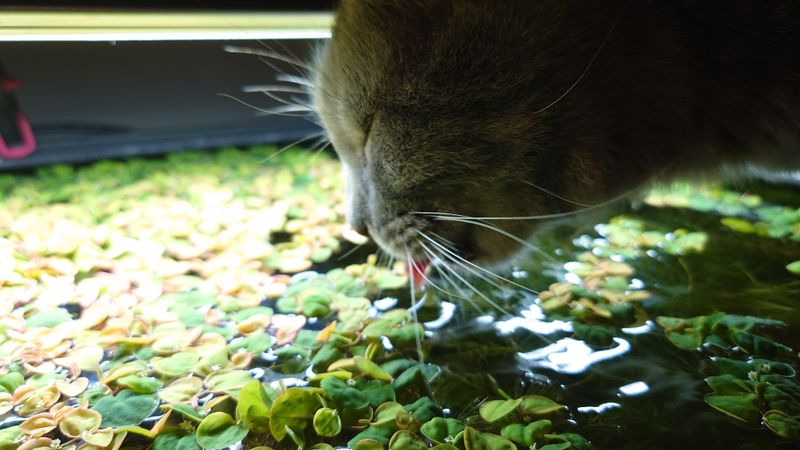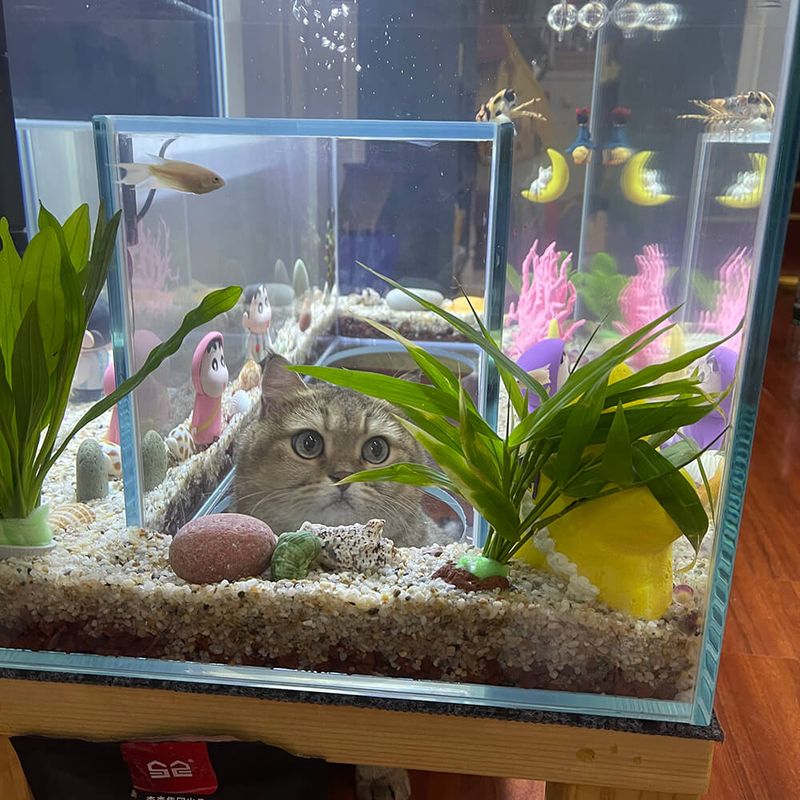📖 Table of Content:
Cats are natural hunters, and to them, a fish tank isn’t just a pretty piece of decor—it’s a shimmering smorgasbord behind glass. Those flickering tails and floating movements can activate your kitty’s predatory instincts, making your aquarium the prime target for their curious paws. While this behavior is understandable from an evolutionary point of view, it can be a nightmare for both the fish and the cat owner.
It’s not just about keeping your fish safe; it’s also about protecting your cat from injury. Open tanks, splashing water, and the potential for broken glass or even ingestion of harmful substances can turn your pet’s innocent play into a trip to the vet. And let’s be honest—no one wants to come home to find Nemo missing and your feline friend proudly licking their lips.
Fortunately, there are clever and humane ways to curb this behavior without scolding or stress. By combining environmental modifications, strategic placement, and a bit of behavior training, you can keep your aquarium safe and your cat satisfied with other sources of stimulation. Let’s explore seven genius methods to make your fish tank off-limits without sacrificing your pet’s curiosity or comfort.
1. Secure a Tight-Fitting Lid
Locking out your cat starts with the basics—a lid that fits like a glove. Aquarium lids should be sturdy and tightly secured, preferably made of heavy glass or acrylic that your cat can’t dislodge with a nudge or leap. Lightweight plastic tops or open designs might look sleek, but they provide an easy invitation for feline exploration. If your tank didn’t come with a fitted lid, investing in one is a small price for peace of mind. Some models even come with locking mechanisms or clips to reinforce security. The goal is to eliminate any gap or weak point that a determined paw could exploit. You’ll be surprised how quickly this one change can solve 80% of the problem.
2. Elevate and Isolate the Tank
Positioning plays a powerful role in outsmarting your cat’s acrobatics. Mounting the tank on a tall, freestanding stand or inside a sealed cabinet reduces visibility and accessibility. Avoid placing it on low furniture or near shelves and couches, as these create easy launchpads for a curious cat to leap from. If your feline can’t see or reach the tank, they’ll be far less interested in plotting an attack. Some owners opt to place aquariums in rooms with closed doors or behind baby gates. Out of sight can truly mean out of mind—especially when other distractions are readily available. Think of it as creating a VIP section your cat doesn’t have access to.
3. Use Double-Sided Tape or Cat Deterrent Mats
Nothing ruins a stealthy approach quite like sticky toes or a surprising zap of static. Lining the tank stand, table, or nearby surface with double-sided tape is a cheap and effective way to send a “do not enter” message. Cats loathe the feeling of sticky residue on their paws, and after a few tries, they’ll quickly associate the area with discomfort. Alternatively, motion-sensitive pet mats can emit a harmless static pulse or beep when touched, deterring most cats from returning. These tools are especially helpful when you’re away and can’t supervise your pet. Over time, the memory of the sensation is enough to keep even the most persistent feline at bay. It’s like setting up an invisible force field around your fishy friends.
4. Distract with Enrichment
Redirecting your cat’s energy toward more exciting alternatives is one of the most sustainable solutions. Cats need daily mental and physical stimulation, and a lack of it often leads to mischief. Provide puzzle feeders, rotating toys, vertical climbing trees, and interactive games to capture their attention elsewhere. Consider a bird feeder outside a window or even a digital fish game on a tablet—anything that gives them a safer thrill. When their days are packed with exploration and play, the appeal of the tank begins to fade. Don’t underestimate the power of scheduled playtime either; 15 minutes of laser-chasing can do wonders. The more fulfilled your cat feels, the less they’ll look at your fish as sport or snack.
5. Block the View
Shielding the visual stimulus of the tank can effectively short-circuit your cat’s interest. Covering three sides of the aquarium with opaque or patterned backing reduces their ability to see the fish clearly. You can also drape a towel or blanket over the tank when you’re not home—this temporary solution is perfect for deterring attention during high-risk times. When the cat can’t see the movement, the mental trigger that kicks off hunting behavior gets suppressed. Over time, their brain won’t even associate the tank with excitement. Some cat owners even use frosted window film for a more aesthetic, semi-permanent approach. The goal is to turn your vibrant fish tank into something as visually bland as a wall.
6. Train with Positive Reinforcement
Creating new habits takes patience, but positive reinforcement goes a long way in reshaping behavior. Reward your cat when they choose to walk away from the tank or stay in a designated “safe zone.” Use treats, clickers, or affection to build a strong connection between good behavior and positive outcomes. If your cat approaches the tank, gently redirect them using toys or treats, rather than punishment. Repetition is key—cats learn best through consistent, clear feedback. Over time, they’ll begin to associate leaving the tank alone with getting something they enjoy. Training sessions don’t need to be long—just five minutes a day can instill lifelong habits. It’s less about control and more about teaching trust.
7. Use Natural Deterrents
Harnessing your cat’s sensitive sense of smell can serve as an effective and natural deterrent. Most cats detest citrus scents, so placing lemon or orange peels around the base of the tank can send them scampering away. Alternatively, pet-safe citrus sprays—found at most pet stores—can be misted on tank stands, cords, or furniture nearby. Be sure to keep these substances away from the water, as they can harm aquatic life. The smell is strong enough to keep your feline at a distance without causing them any harm. Some cats are also repelled by vinegar or eucalyptus, but test these in small amounts to ensure your pet doesn’t react poorly. A few strategic drops can create a scent barrier your cat won’t want to cross.
